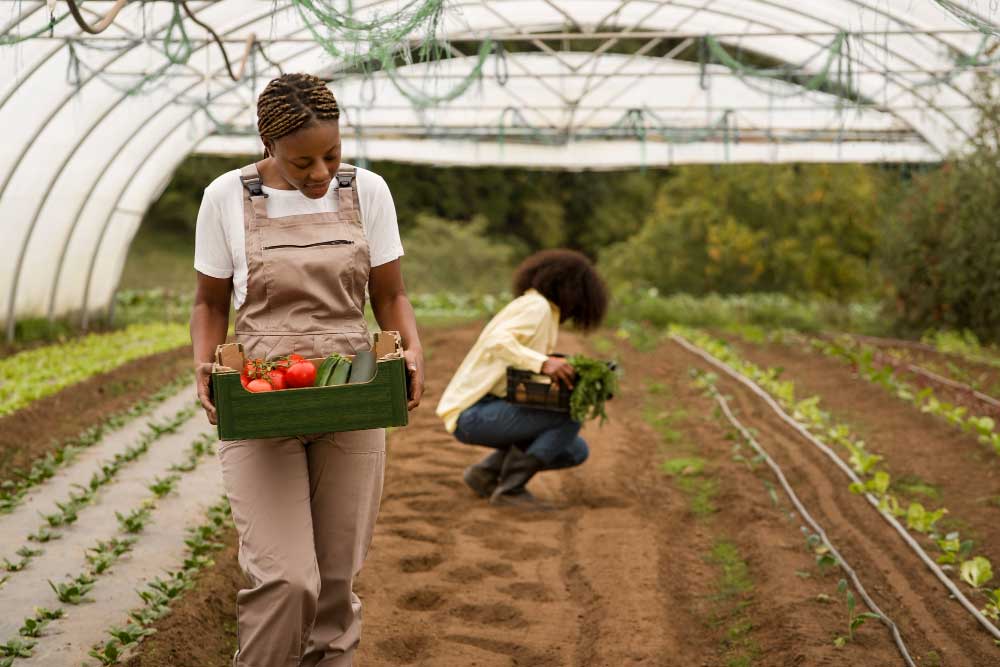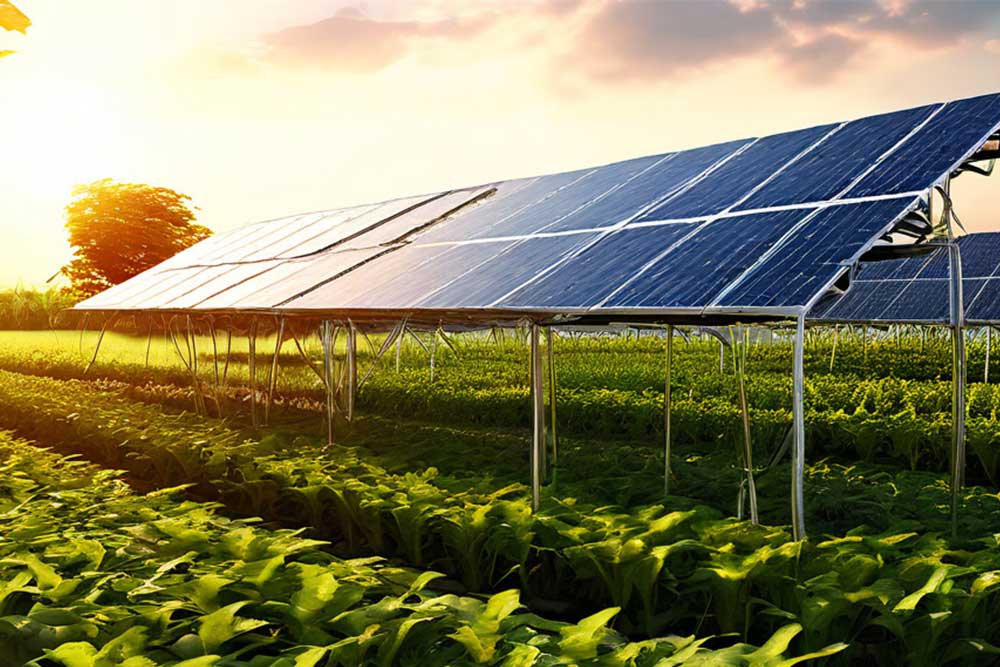Green house Farming
Greenhouse farming is the business of working on and managing growing of crops and plants inside a greenhouse. Greenhouse farming technology makes it possible to grow tropical crops (pineapples, tomatoes, peppers) in the cold regions of Russia and France. And in the reverse direction, temperate crops (apples, cabbages, blackberries) can also be grown in hot regions of Nigeria, Dubai and Israel using greenhouse farming technology. Sometimes regarded as seasonless farming.


Agrivoltaics
Solar is likely to conflict with agriculture land use because the same attributes that make land appropriate for solar energy (plentiful sun, flat land) are also attractive for agriculture.Hence, Agrivoltaics; It’s simply harvesting the benefit of solar panel twice. Most large, ground‐mounted solar photovoltaic (PV) systems are installed on land used only for solar energy production. It’s possible to co-locate solar and agriculture on the same land, which could provide benefits to both the solar and agricultural industries. Co-location, also known as agrivoltaics or dual-use solar, is defined as agricultural production, such as crop or livestock production underneath solar panels or adjacent to solar panels. Exploring alternate solar system designs and agricultural practices that optimize both energy
and agricultural production at co‐located sites may offer opportunities to increase overall value and lower soft costs, or non-hardware costs, of solar energy. It Increases the efficiency of solar panels with the cooling effect of evaporation and on the other hand increases the yield of the crops as the solar panels reduce the rate of water loss through evaporation from the soil.
